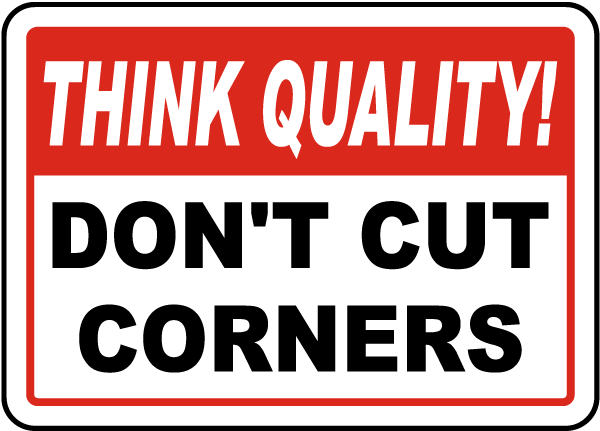Quick Time Fame. Low Cost. What Are You missing?
Commonly used by cloud providers, teaser HRIS implementation services are designed to be completed quickly for a relatively low fee. But at what cost?
Not so long ago, I wrote a blog warning HRIS buyers of the red flags to consider when evaluating a vendor and their approach to HRIS implementations titled “Buyers Beware: The Commoditization of Professional Services”. In this blog, I hint at the idea and the concern with ‘cookie-cutter’ implementations. ‘Cookie-Cutter’ or teaser HRIS implementation services are also known by other names in the industry such as “quick-start”, “fast-start”, “express”, or “smart-start” deployments. These teaser HRIS implementation strategies are commonly used by SaaS/cloud providers and are designed to be completed quickly, to keep the implementation costs low and to make acquiring project funding easier.
 What are teaser HRIS implementation services? They’re a deployment strategy designed to deliver a specific set of functionality, in a specified short period of time, for a relatively low services fee. The advantage of this implementation approach makes the total offering more palatable and easier to sell. The downside is finding yourself inadvertently budgeting for only 1/3 of a system being configured, leaving a good portion of the application unusable. This type of HRIS implementation strategy is quite popular and applicable today. I’m also seeing an increase in its popularity with more and more vendors strongly encouraging their prospects to take this implementation approach. As more companies plan to move to the cloud and transform their HR technology environments, budgeting your HRIS project appropriately for both the subscription fees and the implementation services is critical. Educating yourself on the pitfalls of teaser implementation services will better prepare yourself for conversations with the vendor(s) professional services team to better determine what you want from your implementation.
What are teaser HRIS implementation services? They’re a deployment strategy designed to deliver a specific set of functionality, in a specified short period of time, for a relatively low services fee. The advantage of this implementation approach makes the total offering more palatable and easier to sell. The downside is finding yourself inadvertently budgeting for only 1/3 of a system being configured, leaving a good portion of the application unusable. This type of HRIS implementation strategy is quite popular and applicable today. I’m also seeing an increase in its popularity with more and more vendors strongly encouraging their prospects to take this implementation approach. As more companies plan to move to the cloud and transform their HR technology environments, budgeting your HRIS project appropriately for both the subscription fees and the implementation services is critical. Educating yourself on the pitfalls of teaser implementation services will better prepare yourself for conversations with the vendor(s) professional services team to better determine what you want from your implementation.
Let’s set the stage by providing you two proposals for HRIS system implementation services. Vendor A has proposed a teaser (quick-start) implementation. Their quote for services consisted of a two-page document listing out the costs and limited set of services to be delivered remotely in 6 to 8 weeks, at a cost of $10,000. On the other hand, Vendor B presented a more comprehensive HRIS implementation. This proposal was a thirty-page document outlining in detail their implementation methodology, projected project plan, data migration analysis, user acceptance testing, training and a readiness assessment plan to be included in an initial phase (which consisted of the most relevant and important features of the HRIS system that your organization set as a priority. A combination of onsite and remote services is included in the proposal as well as any future phases of functional areas or integrations for which your firm would like to utilize. This standard HRIS implementation investment is significantly larger, at a cost of $50,000 with an estimated timeline at 14-18 weeks to complete the first phase.
The typical and immediate reaction to these two very different implementation proposals is why Vendor B is charging $40,000 more for their services and if these services are really that important or necessary? It’s just an HRIS after all, it can’t be that complex. With that said, an experienced HRIS buyer is looking at things differently and is questioning what Vendor A has excluded from their implementation proposal that is making their deployment so much cheaper and faster.
So, without further ado.
4 Pitfalls of Teaser HRIS Implementation Services
1. Under-utilization of Your HRIS System
Teaser deployments focus on the basics and speed. Only the basic components or functional areas of your new HRIS system will be configured. This is probably a stark difference from what was demonstrated to you during the evaluation process. Think about it; how much time can the vendor actually spend with you on a ‘quick-start’ implementation based on such a small dollar and time investment? There is a good deal of functionality, security, reporting, and potential integration work that needs to be discussed and evaluated. It’s not uncommon that critical capabilities such as recruiting, onboarding, performance management, timesheets, compensation planning, workflow, learning or succession planning ever get configured or delivered during a teaser implementation.
Teaser deployments are always done remotely and limited to a few interactions over the phone combined with some sort of web-tool(s) to deliver basic services purchased in the ‘quick-start’ services package. There is little to no real project management or planning, system orientation or complete system and end-user training; and very seldom is the system able to be configured to work with your existing business processes. And hardly ever is there time in a teaser implementation for sharing best practices or interactive discussions around what’s worked and what hasn’t for other clients. As a result of all of these deficiencies, clients realize soon after the “so called” implementation is complete that they are significantly under-utilizing their system and many of the HRIS functional components remain disabled or not configured.
2. Low Adoption
What you saw in a sales demonstration(s) will not be what gets delivered with a teaser implementation. Clients trying to save money and complete portions of the system configuration themselves typically find themselves frustrated and administering a HRIS system that provides diluted value with low user adoption.
In order to keep the costs of the implementation low, Vendor A must pre-configure components of its system and push more of the responsibility of the system configuration to you. These pre-packaged configurations will most likely result in new HR processes that will have a direct impact on the way employees, managers and leadership interacts with the new HRIS system. Change is never easy, but asking your organization to not only embrace new technology, but to also modify your internal processes, increases the risk of low adoption, low system utilization and lack of engagement. Hence the reason so many companies will attempt to bend the system around their current HR processes without customization to minimize the impact to users. Remember, a teaser implementation is not like Burger King. It’s the vendor’s way, not your way.
3. Greater Risk
In order to keep your implementation costs low, the vendor must eliminate any hint of application orientation, planning, or significant quality assurance or testing. Tools to provide project governance, mutual accountability, task assignment, timelines with milestones and specific target dates are non-existent. Collectively, these missing elements of project governance and implementation structure or methodology adds greater risk to the success of the project outcome and application delivery.
Besides this approach increasing the overall risk of the HRIS implementation, I also believe that even if everything goes perfect with a teaser implementation, customers may still be unhappy and disappointed because their overall project objectives were not met. This rapid, remote, impersonal, out-of-the-box implementation in 6 to 8 weeks produces a ton of frustration, unconfigured functionality, limited self-sufficiency and unsatisfied customers.
4. Unrealistic Project Costs
The intent of a teaser implementation is to make the initial costs of the HRIS system more palatable and acceptable for you the buyer. This approach is typically easier to present and get funding by leadership. In my humble opinion, you, the buyer, don’t want to hear the real costs of an HRIS project, but want to believe a “quick-start” approach will be sufficient and you will be able to supplement any additional implementation needs with your own efforts and resources. The thing is, once you’ve made this initial investment in a system and selected teaser HRIS implementation services, the vendor will breathe a sigh of relief because you are now “hooked” to a system in which you have limited options. Apart from potential online videos, system documentation and active community user groups, you will need to spend additional dollars on more training and services to be successful. I’ve seen far too many times this approach result in larger investments of time and money than if you had simply utilized a standard implementation methodology from the start.
 So, when does an HRIS teaser implementation make sense? I think there are three cases when this type of approach makes sense.
So, when does an HRIS teaser implementation make sense? I think there are three cases when this type of approach makes sense.
- When Purchasing Your First HRIS System
Many businesses who need, but have never utilized an HRIS, could be a good fit for a low-cost teaser implementation. This new HRIS purchase may well serve as a conduit to the intricacies of the technology and capabilities of the HR application. New customers to HR technology can typically begin by using just the most basic parts of the solution until they gain a reasonable comfort level before moving on to another piece of functionality. I have found most new customers don’t even know they are “missing out” as manual methods are all they’ve ever known.
- When HR Processes Don’t Exist
There are times when a client does not have an existing business process or decided to deploy a new process within their organization (i.e. agile performance reviews) and there isn’t any real consensus on how this process should work; allowing the vendor or implementation partner to simply deploy and utilize the standard configuration regardless if it’s right or wrong for your firm. Sticking with the out-of-the-box processes will keep implementation costs low and allow for faster deployment.
- When the HRIS Application Is NOT Highly Configurable
If your selected application does not allow for significant configuration options, then it’s understandable to not need as much time or as many hours of services to setup the system. Just be aware that you will be using the standard capabilities of the application and you will need to work with the out-of-the-box or pre-built functionality.
It’s extremely important when selecting a new HRIS system to do your due diligence and understand fully the implementation approach of each vendor you are evaluating, the risks involved with their respective implementation methodologies, and the total costs associated with their services*. Rarely do people go back to their leadership team to ask for additional funding to complete the unconfigured functionality. Why? It’s a poor reflection on them to plan and evaluate the investment costs for this new HRIS system. Most people would rather live with 1/3 of an HRIS system than sit in front of their boss and explain their current situation.
My recommendation is for you to ask a lot of questions. Look for the details of what is and isn’t included in your implementation. Don’t neglect to ask and find out what the costs are for additional support, training, testing or configuration assistance. And should you choose to consume teaser HRIS implementation services, remember that in the end you will get what you pay for. Doing it right the first time by making a great first impression on your customers (e.g. candidates, employees, managers, and executives) can never be replaced.
* For more details and insight into the types of implementation approaches, please read my blog “How do you want your HCM Implementation? Good, Fast or Cheap?”.
Feel free to contact us for a better HR technology buying experience.




